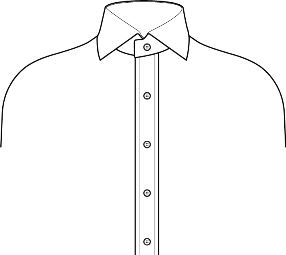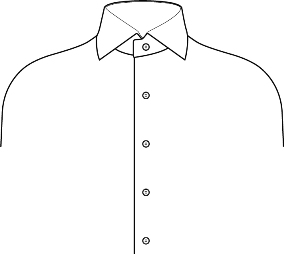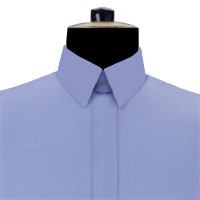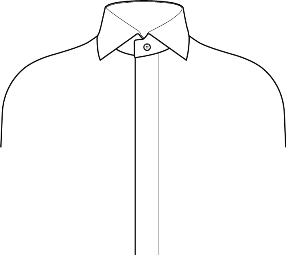almost always made of more than one layer of fabric, and often have interfacing in between the fabric layers. This is done to give support and strength to the placket fabric because the placket and the fasteners on it are often subjected to stress when the garment is worn. The two sides of the placket often overlap. This is done to protect the wearer from fasteners rubbing against their skin and to hide underlying clothing or undergarments.
Placket Front
Material of the shirt folded to the outside (sometimes a seperate piece attached). Range in size from 1" wide to 2" wide with 1.5" being most common. Two rows of top to hem stitching are present, commonly 1/4" in from each edge. Stitching inset ranges from none (edge) to 1/2". Usually made with very light interlining.
 Placket front shirt line
Placket front shirt line
French Front
Material of shirt folded to the underside. No stitches show but should be present on the underside. Cheaper shirts of this kind use the selvedge rather than stitched interlining.
Material of shirt folded to the underside. No stitches show but should be present on the underside. Cheaper shirts of this kind use the selvedge rather than stitched interlining.
 Plain placket front shirt
Plain placket front shirt
Fly Front
Placket Front or French Front with an extra strip behind the center for the buttonholes. Buttons are concealed behind the front center. Another but rarely seen front style is the covered placket. Here the fold is designed to cover the shirts buttons entirely. Rarely seen on off the rack shirts, this front style is geared towards dandies and should not be worn by those looking to blend in.
Placket Front or French Front with an extra strip behind the center for the buttonholes. Buttons are concealed behind the front center. Another but rarely seen front style is the covered placket. Here the fold is designed to cover the shirts buttons entirely. Rarely seen on off the rack shirts, this front style is geared towards dandies and should not be worn by those looking to blend in.
 Fly front placket shirt
Fly front placket shirt
Line Diagram of fly front shirt for better understanding
No comments:
Post a Comment